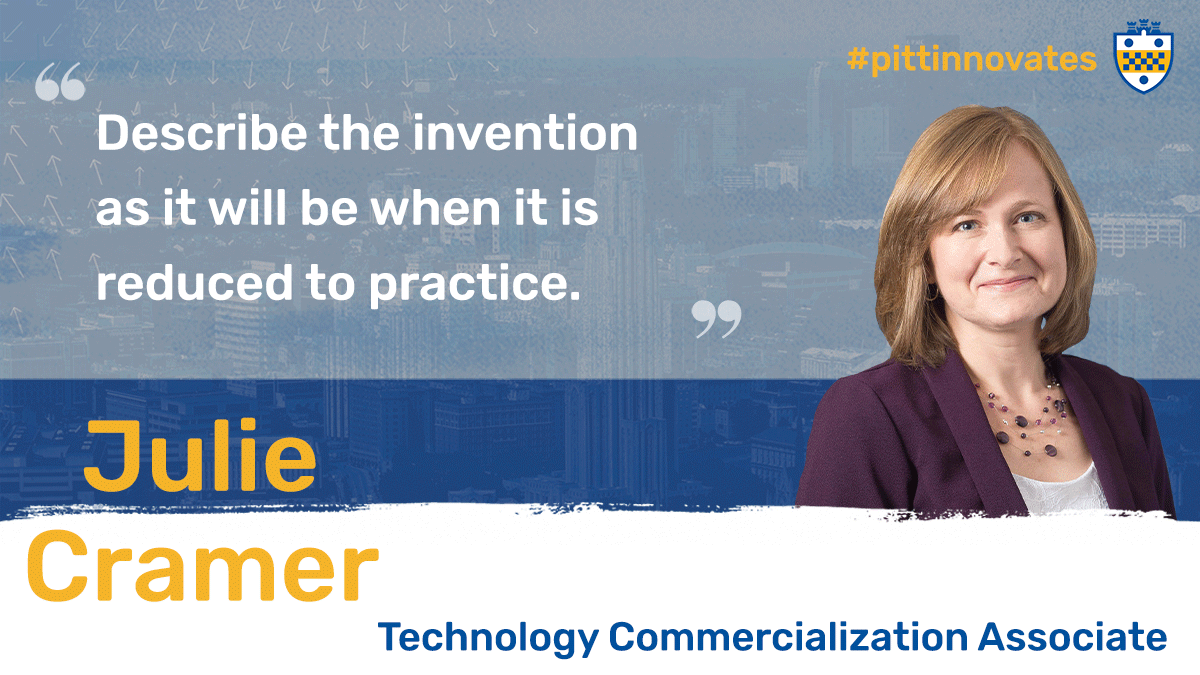When your work as a Pitt researcher begins to yield discoveries that may translate into products or services that can make a difference in people’s lives, the first step in that journey is filing an invention disclosure with the Innovation Institute.
We recognize that the pandemic response has disrupted many of your research programs. While far from ideal, the current situation may be an opportunity to begin assessing the commercial potential of your work.
Innovation Institute licensing managers are key partners throughout the innovation commercialization process. As a group, they have helped usher thousands of Pitt discoveries from disclosure to patenting or copyrighting, and finally to licensing. As a result, the lives of millions of people around the world have been improved–even saved–by discoveries made here.
Here they offer their advice for submitting a strong invention disclosure that can help start the commercialization process off on the right foot.


It’s never too early to submit an invention disclosure. As part of the invention disclosure review process, your licensing manager will share with you any relevant prior art (existing patents and copyrights) and other third party information. While this information is important for developing an intellectual property protection strategy, it may also be helpful to you in further developing your research programs. Submit your invention disclosure(s) early and often as your research continues to evolve. –Alex Ducruet

List any third party agreements, such as MTA, CDAs, consulting agreements or service agreements that are related to the invention. -Abhishek Sangal

Include any internally or externally-sourced funds used to help develop the invention. Funding sources could affect ownership of the invention.
– Andrew Remes

Add outside of Pitt innovators to the disclosure if they were contributors to the disclosure and include their funding information, contracts and any sub-awards they have received. These innovators will also have to sign and acknowledge the submission of the disclosure to our office. -Carolyn Weber

A strong invention disclosure clearly describes how the invention is different and also why it is better than what is already known. Sometimes, innovators only tell us one of the two. -George Coulston
Have grant numbers and copies of award agreements readily available. –Janice Panza

I ask investigators I work with, when submitting disclosures for software-dependent technologies, to clearly delimit the disclosure to the copyrightable work of authorship (the code) or the potentially-patentable underlying computer-implemented method or process and, if necessary, to submit two separate, properly-titled disclosures: one directed to the work of authorship and one directed to the method or process. -Jeff Depp

My advice, especially for those inventions that are at the concept stage: Describe the invention as it will be when it is reduced to practice. In addition to describing WHAT problem it solves, it is helpful to know WHO has the problem. What will it change for the consumer? What will it change for the provider? Does it change clinical practice and how? -Julie Cramer

Invention disclosures should be submitted prior to any public disclosure. Public disclosures can negatively impact our ability to file a patent application. –Maria Vanegas

For intellectual or artistic works such as software, poems, music, or books, consider registering a copyright via the Library of Congress. While not required, it may help establish a public record of the copyright claim and is necessary for enforcing the copyright owners rights in the work. –Robert Racunas
If you have any questions as you prepare to file your invention disclosure, contact us at innovate@pitt.edu and one of our licensing managers will respond promptly.
